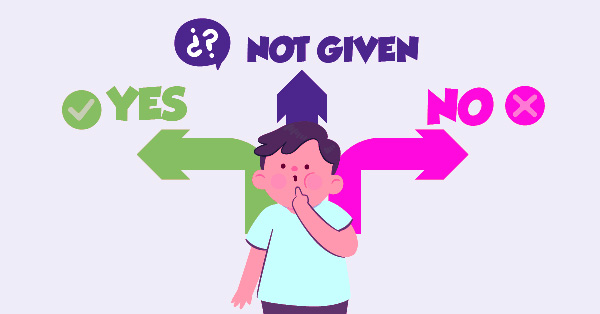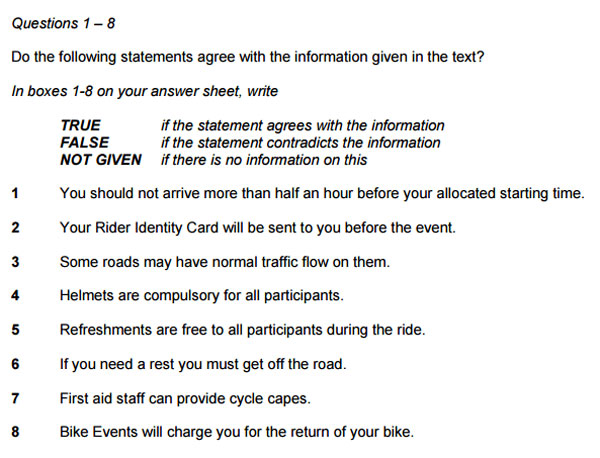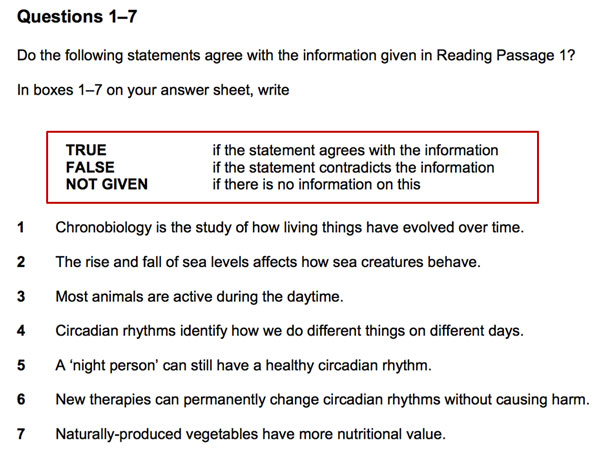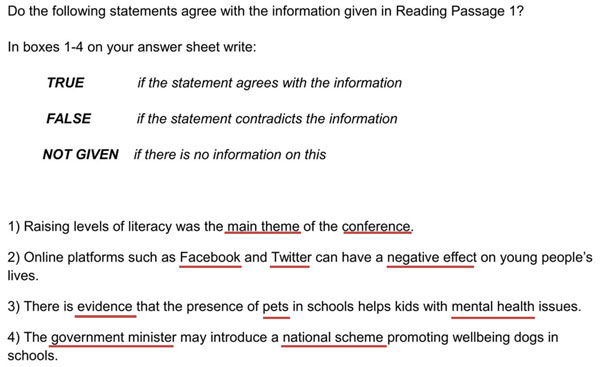Secret to Easy Solve True False in Ielts Reading
True, False, Not Given Questions in IELTS Reading seems to be no big deal for candidates owing to the straightforward first-look. In fact, these questions make it the most difficult for test-takers with multiple problems requiring strategies, tips, and also regular practice. Strategies and tips for True, False, Not Given Questions below may help you boost your IELTS Reading.

1. Introduction to true, false, not given questions in IELTS reading
True, False, Not Given questions in IELTS Reading are designed with a couple of statements containing information that is paraphrased or expressed differently from the text. You must decide whether the information in these statements is True, False or Not given according to the reading passage.
Firstly, you need to discern three terms:
- True: the information exists in the reading passage and AGREES with the statements
- False: the information exists in the reading passage but contains a MISTAKE that makes the statement WRONG .
- Not Given: the information or a piece of information DOESN'T EXIST in the reading passage or the passage DOESN'T CONTAIN enough information to decide if the statement is true or false.

Don't make True, False, Not given questions confused with Yes, No, Not Given questions:
- True, False, Not Given – the statements containing FACTUAL INFORMATION about a topic
- Yes, No, Not Given – the statements containing the OPINIONS, VIEWS, or BELIEFS of the author or other people mentioned.
2. True, false, not given strategies
2.1. Read the requirements carefully
The first thing you should do when tackling True, False, Not Given Questions is to make sure whether the instruction mentions True, False, Not given or Yes, No, Not given.

2.2. Read and try to Understand the statements, Highlight keywords and some noticeable words
Once again, do not start with reading the whole passage. Instead, True, False, Not given question statements need to have a deep insight into the meaning.
While reading these statements to get the meaning, try to identify and highlight/underline keywords and especially qualifying words such as some, always, never, all, none, most, etc.

>>> Practice now: IELTS Reading Practice Test
2.3. Think of the synonyms or paraphrases in the reading text
Thinking in advance about possible synonyms or paraphrases that may show up in the reading passage can make your brain alert when coming across those in the text. This helps you not only scan information faster but also understand the statements more thoroughly.
2.4. Locate the correct part of the reading text for each statement
After acquiring the meaning of True, False, Not given question statements, start to locate the information in the reading text based on the keywords identified. You should follow the order of the statements to search for the information that is arranged in sequence in the reading passage (The answer of sentence 1 will be above that of sentence 2 and so on).
Be careful with synonyms and paraphrases and note the number of sentences at the time you find out its information in the text for later double-check.

2.5. Read the located paragraphs in detail
Read the paragraphs in detail after locating the information and make sure that you've read and figure out all the parts related to the statements of True, False, Not given questions.
This process should be done in order, which means locating information and analysing details of the second statement will be after that of the first one.
2.6. Cross-check the information with the statements to decide the answers & Highlight the words giving your answers
Reread the statement that you are looking into and check with the matching part in order to decide if it is true, false or not given. Remember that:
- If the statement is TRUE, the information in the statement and in the reading passage must perfectly match in terms of meaning
- If the statement is FALSE, the information in the statement and in the reading passage differ in some details.
- If the statement is NOT GIVEN, you have to struggle to find the answer or information
Moreover, if you are really unsure or can't find the answer, mark it as 'not given' and check it later.
2.7. Double-check the answers
Yes, No, Not given Questions trigger many confusions or tricks, which is necessary to be double-checked carefully to ensure the final answers.
3. Common problems and mistakes & tips for true, false, not given questions in IELTS reading

| Common Problems | Tips |
| 1. "Not given" option problem Many candidates find it challenging to decide a Not given statement because they used to answer True or False questions without the Not given option back to their school days. Besides, they are occasionally not sure what information to look for, which takes them much time to decide the final answers and affects other parts of the IELTS Reading test. | If there is any additional information that does not appear in the statement, mark "Not Given" since the information cannot be found. |
| 2. Getting confused about True, False, Not given Many candidates reported that some statements seemed to be false or true, but then it turned out to be not given, which made them fill with bewilderment. |
|
| 3. Looking for the exact same words or phrases in the reading text after reading True, False, Not given question statements With changeable words, you will find synonyms or paraphrases appearing in the reading passage rather than the same words as in the questions | Try to think of the synonyms or paraphrase keywords in your own words when reading True, False, Not given Questions |
| Common Mistakes | Tips |
| 1. Reading carefully the whole text before questions Blind reading in the first place can be both time-consuming and misleading the instructions | Read the instructions and statements first. Be careful with True, False, Not given, and Yes, No, Not given.
|
| 4. Focus too much on keywords instead of the statement meaning Many attempts to highlight and seek keywords in the reading passage without understanding exactly the whole meaning of statements. Therefore, they may find it hard to identify whether the statement is true or false or not given. | Try to fully understand what each statement means in order to choose the correct option. |
| 5. Apply background knowledge to answer the questions This test tends to check your Reading skill so do not utilise your background knowledge or personal experience to answer the questions | Ignore anything you already know about the topic and don't make assumptions. Base your answers on the text only. |
Other tips for True, False, Not given Questions in IELTS Reading:
- Don't stay too long in a question or you will squander your chance to score a point for the next ones.
- If you don't have at least one "True", or "False", or "Not given" option, at least one of your answers is incorrect
- Identify and highlight words that qualify the statement ( qualifying words such as some, all, only, mainly, often, always, etc.) as they can change the meaning of the statement totally.
e.g. 'Coca-Cola has always made its drinks in the U.S.A.'
has a different meaning from
'Coca-Cola has mainly made its drinks in the U.S.A.'
| Qualifying Words | Example |
| Adverbs of quantity | all, everyone, none, some, a few, many |
| Adverbs of frequency | always, never, sometimes, often, occasionally, rarely |
| Adverbs that mean "one and no more" | purely, solely, only, unique, mainly |
| Ordinal numbers | first, last, second, third… |
| Time-order adjectives | newest, latest, most recent, oldest |
- Pay attention to verbs that qualify statements (suggest, believe, know, claim, report, etc.)
e.g.
'The man claimed he was a British citizen,'
'The man is a British citizen'
⇒ 2 sentences mean 2 different things
True, False, Not given Questions may cause you difficulties in IELTS Reading but applying strategies and tips that suit your learning style can help you master this question type.
The more you practice, the higher band score you will get. So, install IELTS TEST PRO now and enjoy your IELTS journey!
Source: https://ielts-testpro.com/reading-tips/true-false-not-given-questions-ielts-reading/
0 Response to "Secret to Easy Solve True False in Ielts Reading"
Post a Comment